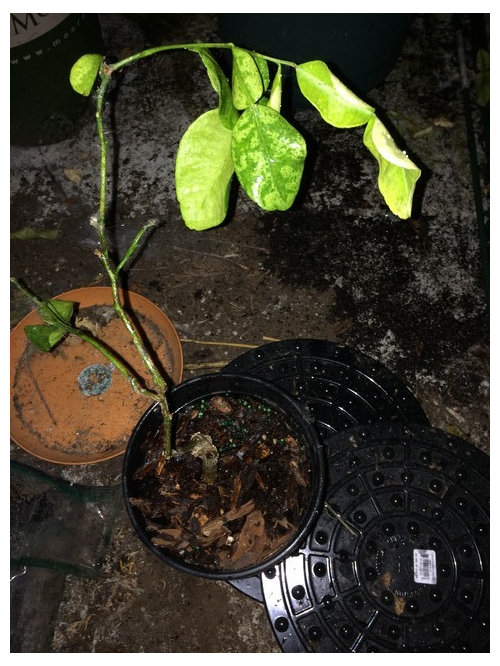Young Kieffer (makrut) lime - cry for help
Arkaaito
9 years ago
Related Stories

HOUZZ TOURSMy Houzz: Family of 5 Lives (Almost) Clutter Free
Smart decor decisions and multipurpose items help this San Francisco family keep things tidy
Full Story
EDIBLE GARDENSNatural Ways to Get Rid of Weeds in Your Garden
Use these techniques to help prevent the spread of weeds and to learn about your soil
Full Story
GREEN BUILDINGWater Sense for Big Savings
Keep dollars in your pocket and preserve a precious resource with these easy DIY strategies
Full Story
HEALTHY HOMEGive Your Baby the Healthiest, Safest Nursery Possible
Protect your newborn by choosing nontoxic nursery furniture, bedding, rugs and paint. We give you all the details here
Full Story
LIFEIs Cabin Fever Real? Share Your Story
Are snow piles across the U.S. leading to masses of irritability and boredom? We want to hear your experience
Full Story
HOUSEKEEPINGHow to Clean Your Fridge, Inside and Out
Keep your refrigerator clean and fresh, while you gain storage space and lose those ‘UFOs’
Full Story
FARM YOUR YARDHouzz Call: Show Us Your One-of-a-Kind Chicken Coops
Do you have a fun or stylish backyard shelter for your feathered friends? Post your pictures and stories in the Comments!
Full Story
LIFEDo You Live in Your Childhood House?
Tell us about the home you grew up in — whether you live there now or not — and share your pictures!
Full Story
LIFEHouzz Call: Show Us the House You Grew Up In
Share a photo and story about your childhood home. Does it influence your design tastes today?
Full Story
MOST POPULARThanksgiving Tales: When the Turkey Tanks
Houzz readers prove adept at snatching victory from the jaws of entertaining defeat
Full StoryMore Discussions







hoosierquilt USDA 10A Sunset 23 Vista CA
ArkaaitoOriginal Author
Related Professionals
Reading Landscape Architects & Landscape Designers · Foothill Ranch Landscape Architects & Landscape Designers · Grand Haven Landscape Architects & Landscape Designers · Hershey Landscape Architects & Landscape Designers · Leawood Landscape Architects & Landscape Designers · Bell Gardens Landscape Contractors · Cicero Landscape Contractors · Doctor Phillips Landscape Contractors · Fort Myers Landscape Contractors · Hollywood Landscape Contractors · Hurricane Landscape Contractors · Merced Landscape Contractors · Pleasant Hill Landscape Contractors · Shaker Heights Landscape Contractors · Shenandoah Landscape ContractorsOhiofem 6a/5b Southwest Ohio
orangelime1
ArkaaitoOriginal Author
livreosa
orangelime1
ArkaaitoOriginal Author
westgirl